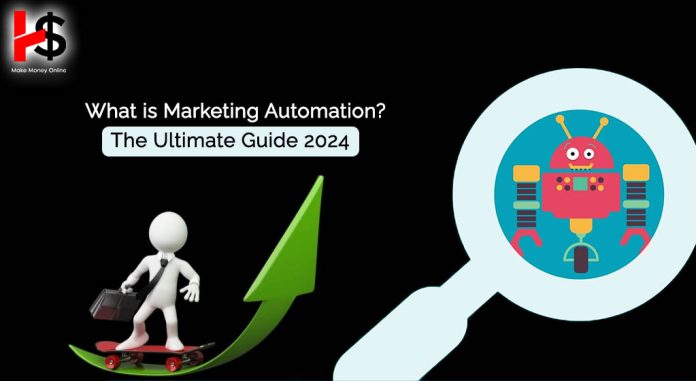Marketing automation, a groundbreaking innovation, offers substantial promises: more leads, increased conversions and boosted sales, all with less effort. Remarkably, 80% of the world’s leading companies utilizing marketing automation technology for three years or more have experienced a significant surge in both revenue and consumer engagement. Top of Form
With marketing automation, marketers have an exciting chance to improve customer experience, cut costs, and increase efficiency. Although embracing automation could be difficult for your company, with the right support, the process is actually easier to handle than you might imagine. When executed correctly, it can yield substantial rewards. In this guide, you’ll learn everything a marketing team needs to know about marketing automation and illustrate how it can be help you to boost your brand.
Table of Contents
What is Marketing Automation?
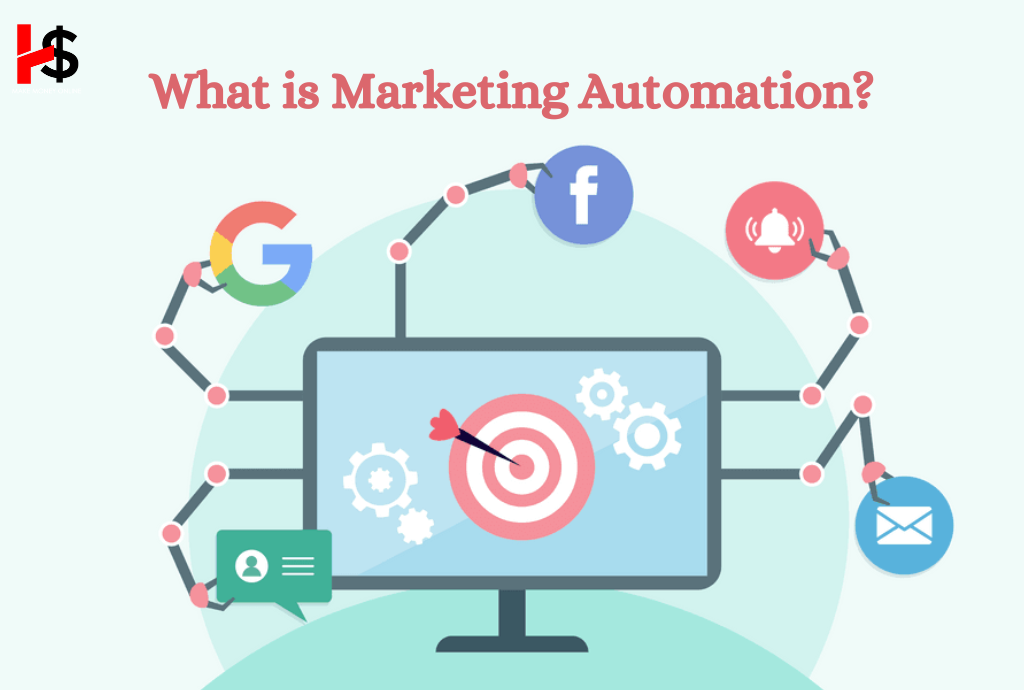
Technology known as “marketing automation” enables businesses to centrally plan, coordinate, and oversee their consumer interactions. It also manages marketing campaigns and procedures across many platforms automatically. It schedules and finishes regular marketing duties with the help of software. Marketing return on investment (ROI) is increased when a business can more effectively deliver relevant content to customers at the appropriate times through automation, which also saves time and money.
Many brands commonly use a set of marketing automation tools, known as marketing technology. These platforms play a vital role is lead generation across diverse channels, including email marketing, social media or website based chatbots, and other avenues like SMS or text messaging. Marketing automation tools extend the outreach of marketing campaigns, contributing to the establishment of inbound marketing. Some vendors refer to this strategy as finding prospects for the top-to-mid funnel through personalized pitches derived from analytics tools, which categorize customers into different groups for targeted approaches.
How Does Marketing Automation Work?
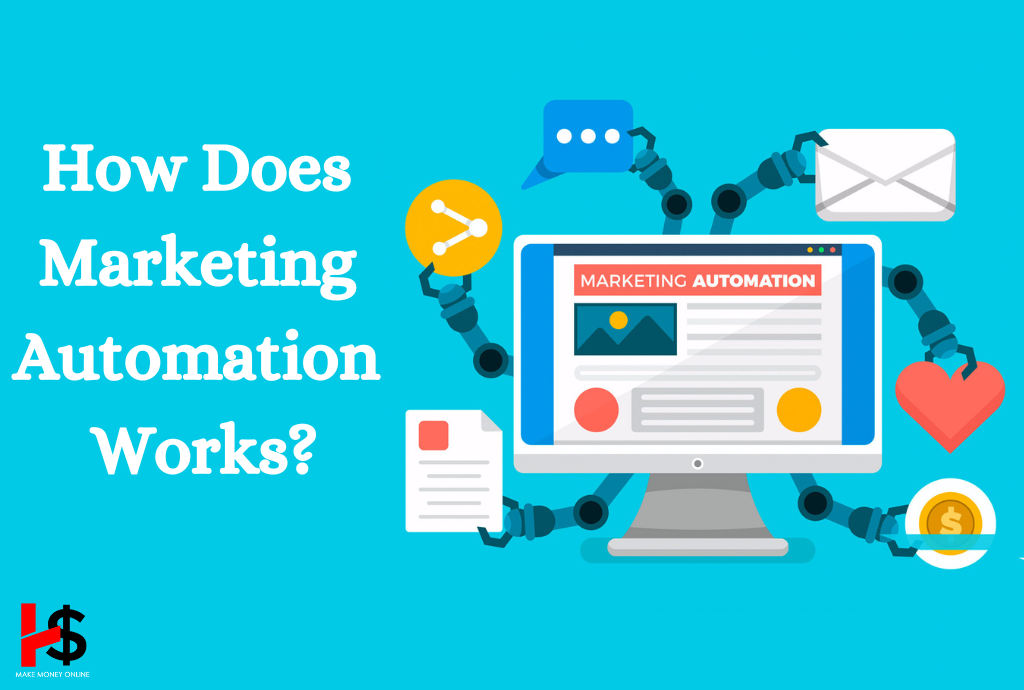
Marketing automation software serves two main purposes: it merges various marketing channels into a single program and uses automated workflows to manage tedious and routine operations. Among other integrations, these comprise specialized systems for analytics, social media, and email. Through three main functions, the system effectively manages several schedules at once and assesses the success of each marketing initiative.
Customer Profiles
All consumer interactions with every brand touch point are tracked by marketing automation software. Every time a consumer interacts with an email, website form, or social network page, their profile is updated. Analytical reports provide a complete detail of a consumer’s interaction with your brand.
Visual Outlines
The complexity of marketing initiatives keeps rising as there are more digital touch points involved. Accessible visual interfaces allow users of marketing automation software to examine campaign timelines. Marketers can use the customer journey as a road map to determine the path their consumers have taken to engage with them.
CRM Integrations
The marketing and sales teams work together more effectively when marketing automation is integrated with a shared database. Integrated into marketing automation systems are CRM connections, a frequently utilized technique. These systems extract data from CRM, adding more detail to the original sales profiles. The marketing team can tailor their approaches to each potential customer through this procedure, which eventually provides the sales staff with qualified leads.
Reasons to Choose Marketing Automation
Every employee is a company’s sales and marketing teams can perform more productively thanks to marketing automation. Among the particular advantages are the following:
Enhanced Marketing Plans
An integrated marketing strategy strengthens a business’s ability to achieve its goals. Marketing automation software, with its visual builders and comprehensive integrations, plays a crucial role in supporting these plans by offering projections and research based in both quantitative and qualitative data. Clear visual roadmaps provide a transparent “full picture”, supporting buy-in from leadership unfamiliar with specific marketing practices.
Work Efficiency
Your marketing staff can concentrate on things that need careful thinking by automating processes like lead generation and email scheduling. Automation also reduces human mistake, which can take a long time to correct, as well as the manual data entry involved in many automated operations. When the size of your marketing team and the scope of their campaigns change as your business grows, these savings can also expand with it.
Interconnected Brand Touch Points
All marketing channels can communicate with each other effortlessly when they are connected via automation software. Employees don’t have to manually identify which clients answered a Facebook survey and make follow-up messages for each one. Alternatively, they can set up the automation software to initiate a drip campaign of emails that are customized according to the replies from the customers.
These details are already stored in customer profiles, reducing the time spent on data recording. When automation links all marketing channels, customers experience a seamless, curated journey, freeing employees from repetitive tasks. The synchronized feedback and connections across all marketing channels enhance the individual value of each through personalization. Unique strategies can be implemented across every network without concern that the customer might overlook the most effective one for the. The platform they currently use guides them toward others that are relevant, ensuring they encounter personalized messages at each stage.
Increased Customer Lifetime value
Delivering highly targeted, personalized messages that bring value to each customer enables them to interact with your brand at their pace. A satisfied customer is more likely to contribute to a higher customer lifetime value (CLV). Eliminating concerns about customers being overlooked due to human error allows marketing teams to implement a deliberate strategy, confident that they won’t need to recall every instance of contacting a customer or forwarding their information to guide them seamlessly through the next steps of the buying process.
Easy Customer Support
In the modern era, keeping a customer waiting is one of the easiest ways to disappoint them. Chatbots have completely changed how brands interact with customers by reducing wait times, whether it is for customer support, shopping, or navigation. As a component of your marketing automation plan, chatbots are more efficient and produce better outcomes. Robots are able to carefully consider what is being asked of them and answer appropriately since they are not fed up or agitated by constant questions. The burden of handling difficult jobs and gazing at their cluttered inboxes can be lifted from marketers and customer support representatives. This is a fantastic way to communicate easily.
Set Reminder Messages
It would be advantageous to automate reminder messages rather than perform manual tasks if your company attend, plans, hosts, or simply notifies users about events. Sending reminders at the appropriate moment, whether for an invitation, pre-event, or post-event message, is a terrific way to interact with people. You could arrange your approach to these communications ahead of time. For example, you can arrange for an invitation with few lines describing the occasion, to be followed by a reminder email and a request for confirmation. After the event, you can plan a follow-up message, a survey, or even set up a call with your sales team based on who did end up attending.
Features of Marketing Automation
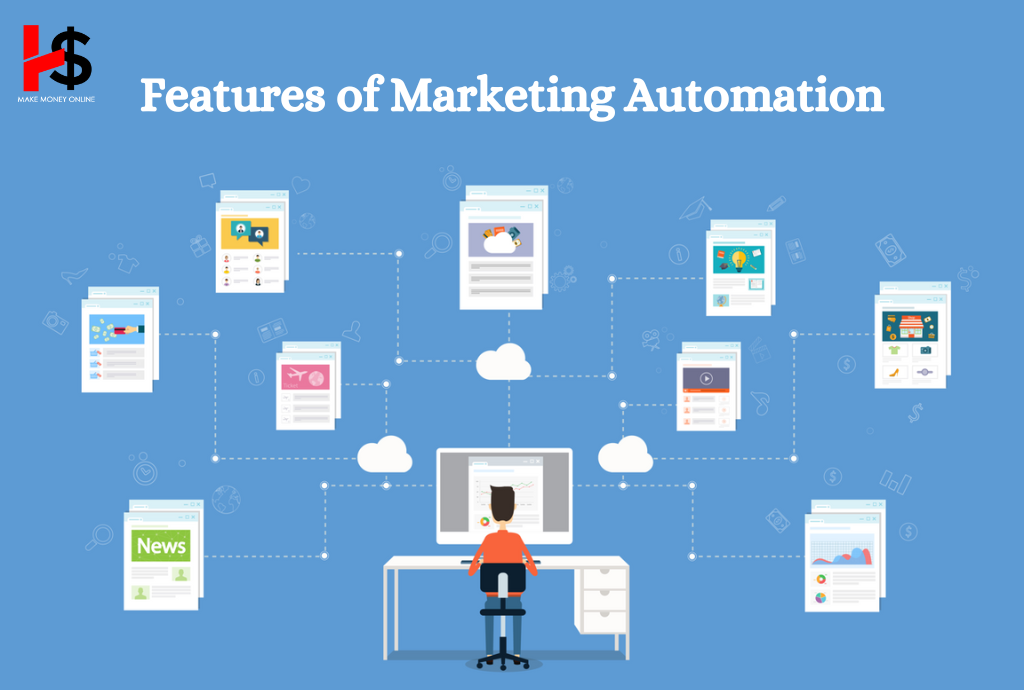
Social Media Dashboards
Marketing teams may face difficulties in managing several networks and accounts, particularly when attempting to monitor customers across networks using distinct usernames or managing minor alterations in campaigns. All social networks and their content schedules are consolidated into a single location with the help of marketing automation tools’ social media dashboards. Utilize the platform to examine engagement metrics across all applications, link clients to their profiles to prevent repetitive messaging, and plan posts ahead of time.
Different Workflows
Users configure automation process using workflows, which are essentially simple coded instructions serving as the fundamental components of automation. These instructions instruct the system to execute a task based on specific trigger. For instance, an email trigger might prompt the software to send a follow-up email to customers who liked a social media post. Visual dashboards frequently illustrates these workflows, showcasing their impact within the broader context of the marketing campaign.
Creating workflows in marketing automation platforms doesn’t demand coding knowledge. Users can choose from templates or build workflows from the scratch to support their campaigns, and these workflows are easily adaptable with a few clicks before or during a campaign. Marketers utilize these tools to enhance the personalization of their outreach. For instance, while a generic follow-up might be sent to most customers who like a Facebook post, users can design more intricate workflows that send one of several messages based on a comprehensive set of criteria.
Customer Segmentation
Businesses can improve their consumer segmentation tactics by utilizing integrated data from automated marketing. Automated marketing systems monitor every campaign with great care, offering comprehensive reports on website metrics, click-through rates, and conversions. New criteria for client segments are developed based on these insights, and the usage of increasingly accurate segmentation improves the tailoring of every customer encounter. Sophisticated segmentation capabilities are another aspect of many automation programs that efficiently arrange a large volume of this data.
Landing Pages and Forms
Make it easier for customers to download content and subscribe to your newsletter by using landing pages. Automation technologies can be used to quickly and easily generate simple landing pages and fill out online forms for clients who have already registered, eliminating the need for manual data entry. The downloadable assets and pages can be stored within the database. They can be tagged with tracking URLs generated by the software, even they are hosted separately.
Budget Management
When integrated with your CRM and accounting system, marketing campaign costs can be instantly updated with each proposed adjustment. Conduct a cost-benefit analysis for each additional email or purchased content piece to proactively stay ahead of your budget.
Types of Marketing Automation
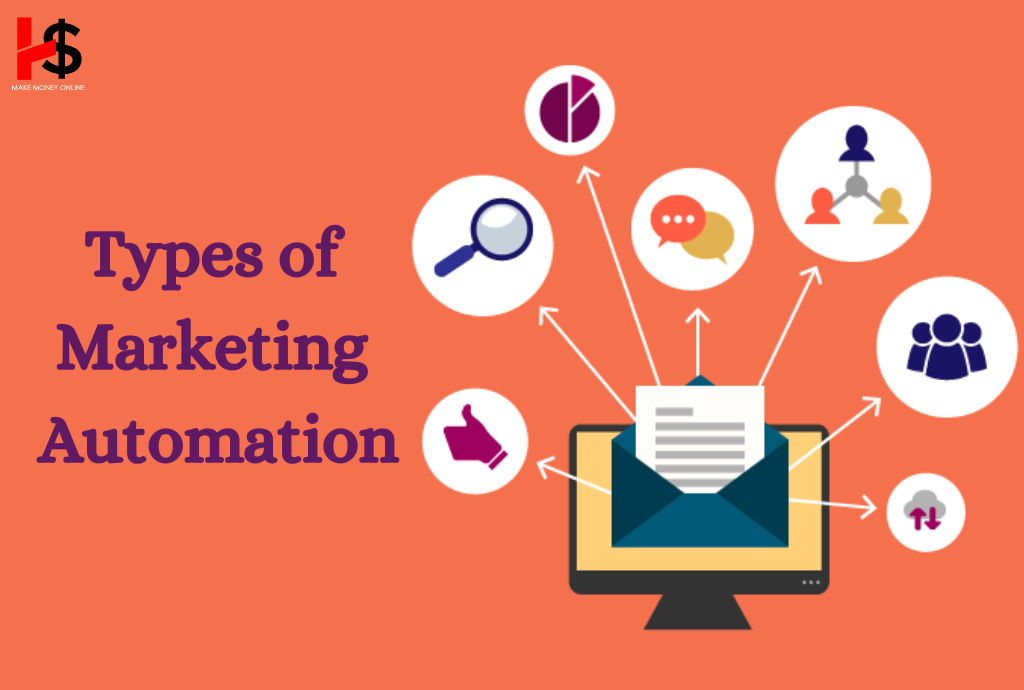
Email Marketing Automation
Email campaigns that are automated enable you to end segmented and personalized messages to certain recipients. One example of an automatic email that can be sent is to remind a client that they have things in their basket that they can purchase at a discounted price within a certain amount of time, should they leave their cart empty. HubSpot, Mailchimp, and Campaign Monitor are a few well-known solutions for email marketing automation.
Social Media Marketing Automation
The scheduling, uploading, and monitoring of content automatically on various social media platforms is made easier with the help of social media marketing automation. Imagine that you wish to plan a social media post to be published at a particular time in a different time zone during a period of time that you are unable to work. Posting in advance enables automated publication at the best moments under such circumstances.
Facebook Advertising Automation
Email and SMS marketing work great for nurturing current leads when combined with CRM connectivity, but where can you find new prospects? Facebook, naturally. Facebook has a variety of ad formats, including single-image and video advertising, that you may utilize to automate lead generation. Instagram advertisements can also be managed through Facebook Business Manager. Facebook advertisements have a useful feature that lets you link your preferred CRM software to automatically collect new leads that are generated by your advertising campaign.
Best Marketing Automation Software

HubSpot
A CRM, marketing hub, sales hub, and services hub are all included in Hubspot’s “full stack” marketing platform. Users may set up automated workflows to work across products, and it offers an easy-to-use interface. Although Hubspot offers bundles for the “all in one” approach, if you wish to upgrade to use specific services, you can also choose to purchase individual items.
Platform.ly
Though initially they appear similar to many others, platform.ly offers an amazing portfolio of marketing automation options. But the real differentiator between Platform.ly and the composition is its tracking and link attribution system. Making better-informed marketing selections is made possible by its link tracking feature, which lets you assign the revenue you’ve made from each channel.
Adobe Marketo
Customer-driven journeys across many channels are made possible by Adobe Marketo, a marketing automation tool. Marketo Engage uses AI, real-time behavioral data, and user profiles to tailor every user’s experience; from emails to landing pages. Advanced lead generation, scoring, and account management are included, and it connects with CRM systems. Additionally, you may connect sales and marketing teams, monitor the efficacy of your content, and examine client journeys to improve marketing efficiency.
MailChimp
One of the most widely used and reasonably priced marketing automation solutions available is MailChimp, which is also frequently regarded as one of the best, especially by small firms. This is actually MailChimp’s main advantage because it has refined email strategy to the smallest detail. Thus, this might be the tool for you if you operate on a limited budget, have enormous lists, and don’t need many other automation procedures. These days, MailChimp offers a comprehensive set of automation capabilities that operate without hiccups and combine easily with other systems. Included in the free version are pre-built signup forms, analytics tools, newsletter templates, and more. The best part is that many of its essential features are free to use.
ContentStudio
Another popular automation tool for social media management is ContentStudio. Brands, agencies, and marketers who want to maintain organization while achieving steady audience development across channels will find this potent all-in-one tool to be ideal. In addition to scheduling material and automating social media communications, you can visually sketch out your social media strategy here. Utilized by esteemed organizations such as Decathlon, Unilever, and New York University, this marketing automation solution is reliable and effective. ContentStudio pricing levels range from $25 to $99 a month.
Customer.io
Everything you need is available on Customer.io to customize, target, and test your messaging according to how customers engage with your company. It’s a specifically designed trigger-based messaging system that links emails according to user activity and targeted demographics. Customer.io offers real-time data, seamlessly interacts with various mobile interfaces, and has an impressive degree of audience engagement. Monthly packages begin at $150, which is perfect for small enterprises.
Pros and Cons of Marketing Automation in a table
| Pros | Cons |
| Improved Efficiency and Productivity | Initial Setup and Learning Curve |
| Increased Lead Generation and Nurturing | Potential for Overautomation and Lack of Personalization |
| Enhanced Customer Engagement and Experience | Data Privacy and Security Concerns |
| Measurable and Scalable Marketing Campaigns | Cost of Implementation and Maintenance |
| Data-Driven Marketing Decisions | Integration Challenges with Existing Systems |
| Reduced Marketing Costs | Requires Ongoing Monitoring and Optimization |
| Ability to Personalize Marketing Messages | Potential for Technical Glitches and Downtime |
Read More:
